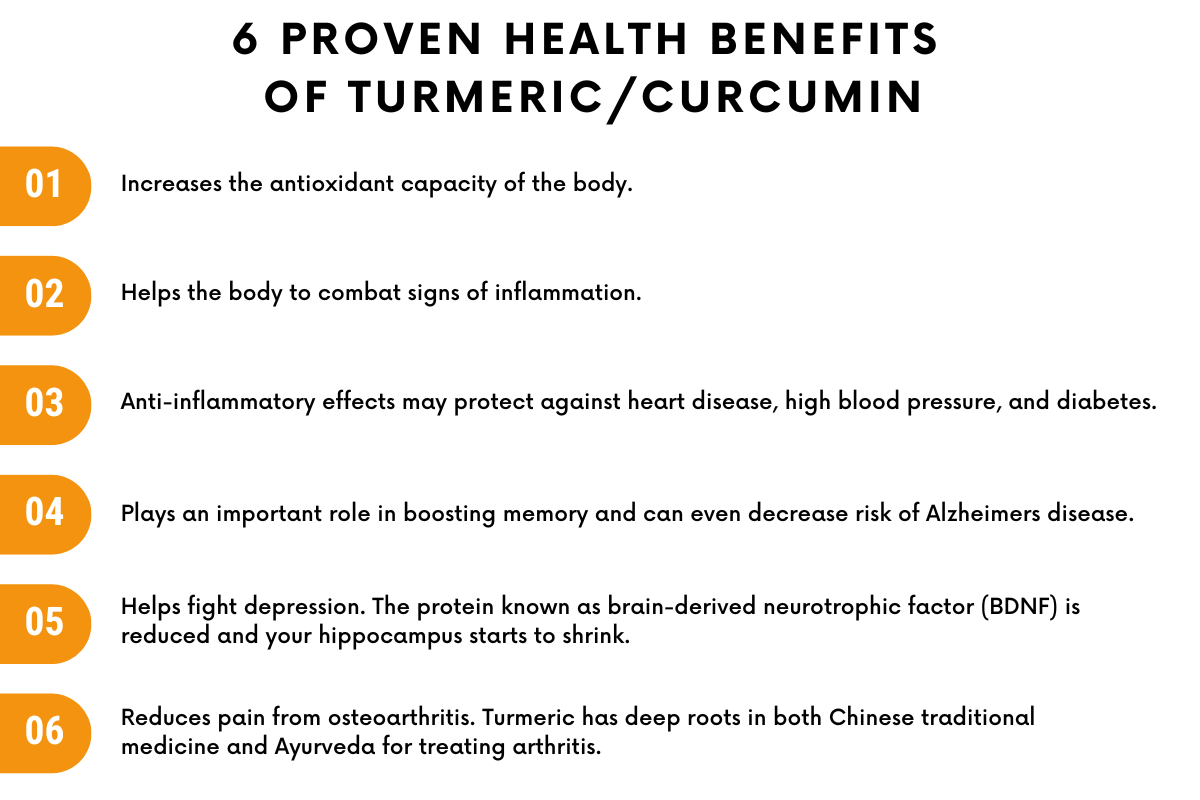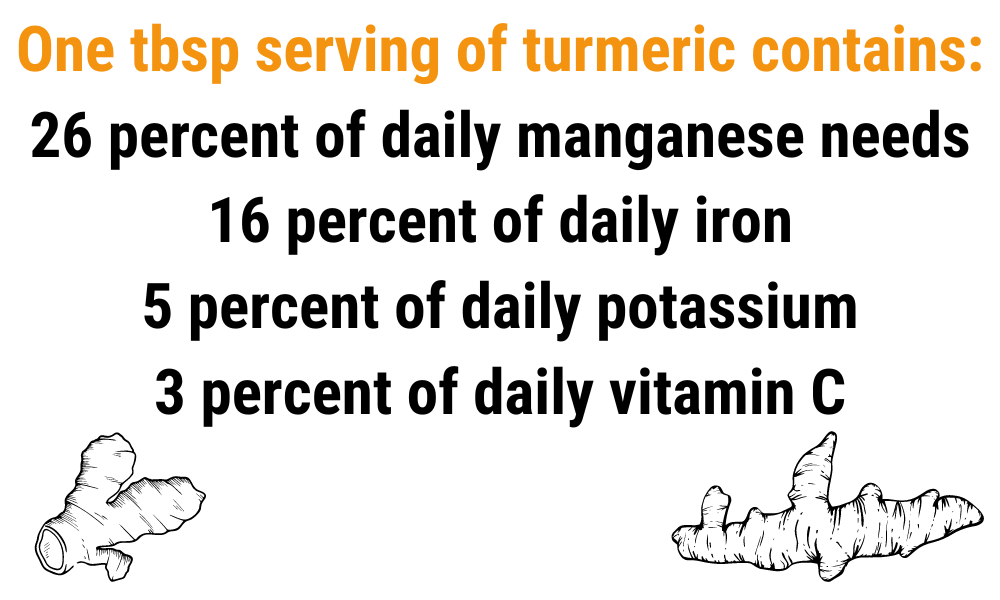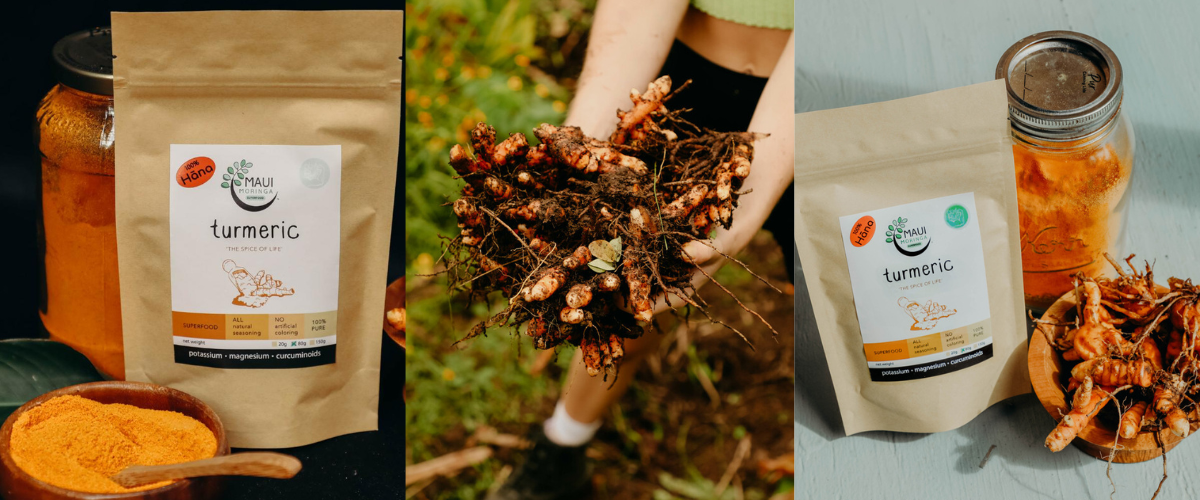We hand-process our Turmeric rhizomes -from start to finish- with Aloha: harvest on a day as designated on the Hawaiian planting calendar (really!), dehydrate them in our self-contained Moringa/Turmeric room, create the Turmeric powder, package it and send it to your door! Filled with powerful nutrients and intense flavor from the volcanic-based soil, our Turmeric powder will transform your cooking experience, and quite possibly, your health. Check out our Turmeric Recipe E-Book for 11 incredible & nutritious recipes you can make at home using our turmeric powder!


What is turmeric?
Turmeric’s scientific name is curcuma longa. It’s a rhizome, an underground stem, of a plant that’s in the ginger family. It’s native to India and Southeast Asia, and it’s been used by people of these regions for thousands of years as a food and as a medicine. It can be consumed fresh—in India, this is usually in a pickled form, or as a powder. It can also be juiced.
What are its traditional uses?
In Ayurvedic medicine, turmeric is used:
-topically for a variety of skin conditions, including skin infections.
-to improve the skin’s appearance. In traditional Indian weddings, both the bride and the groom apply a paste of turmeric, mixed along with other ingredients such as sandalwood, onto their skin to enhance the skin’s glow.
-as a food coloring and flavoring agent
-for coughs and colds
-as an antiparasitic medication
-as an anti-itch medicine
-as a medicine to treat Type II Diabetes, urinary tract infections, gout, and even hemorrhoids
-as a regulator of the immune system, as a liver tonic, and even as a hair remover
-as a dye for fabrics.
Turmeric has always been used in Hindu ceremonies. It’s very much a part of the everyday culture. You can’t have India without turmeric. I want to acknowledge that of course, there are other cultures that have used turmeric since antiquity- but I don’t know enough to speak about them. In Ayurveda, it’s always preferred to take any medicine as a food. Turmeric is no exception. It’s used in cooking and you only need a little bit. With all of its amazing traditional uses, it caught the eye of scientists who wanted to study it and figure out why it was such a magical spice.


